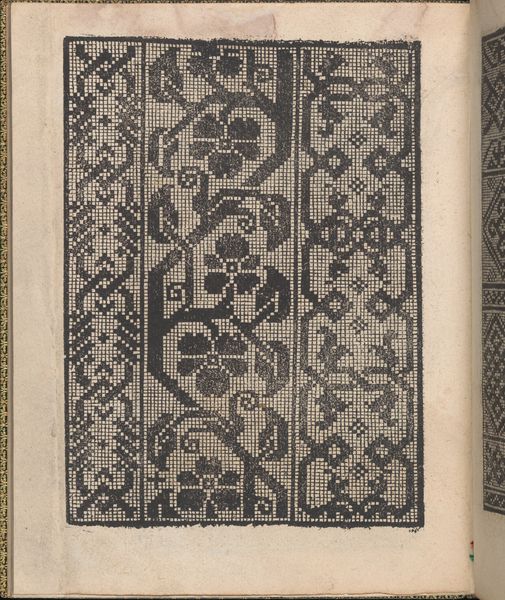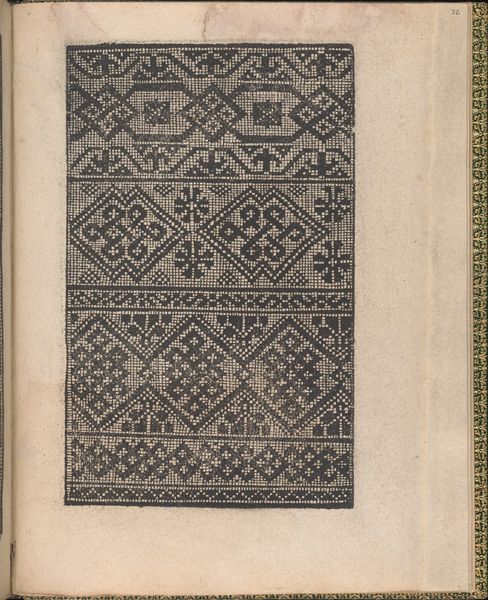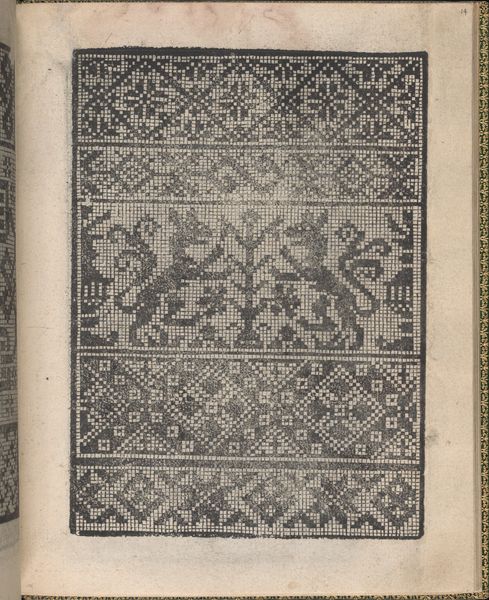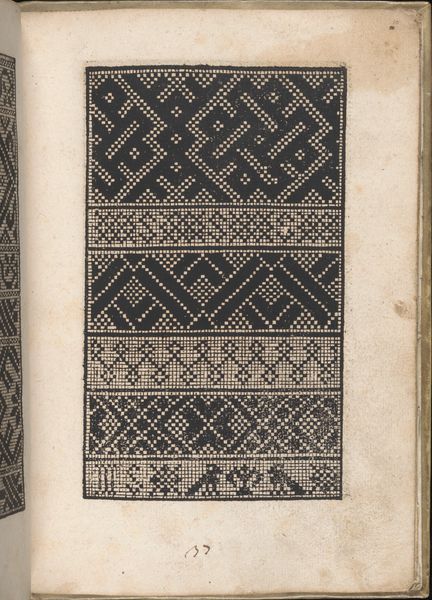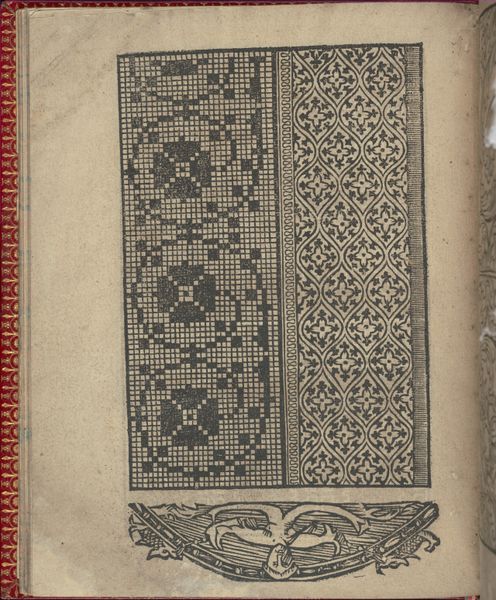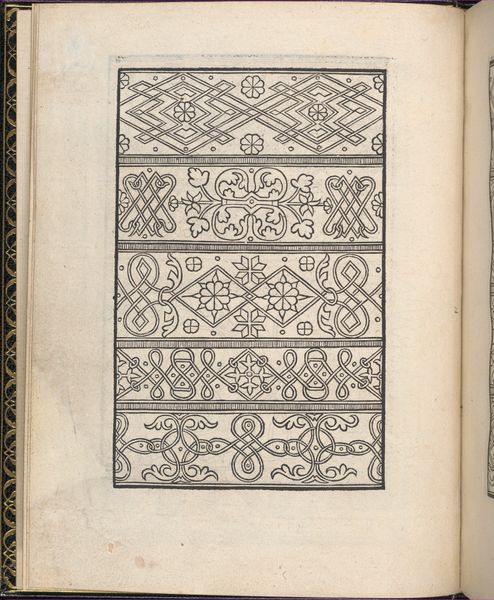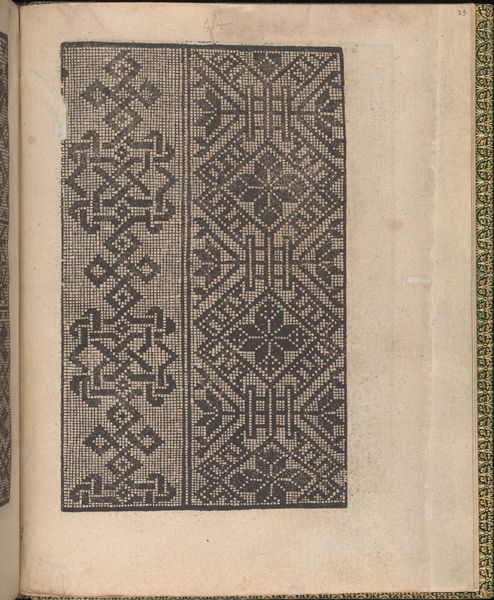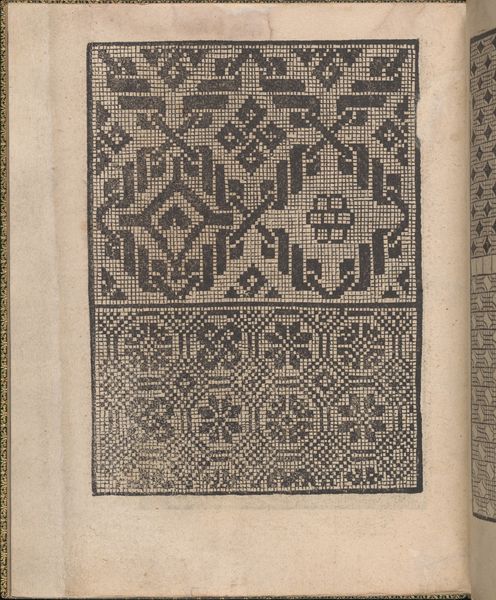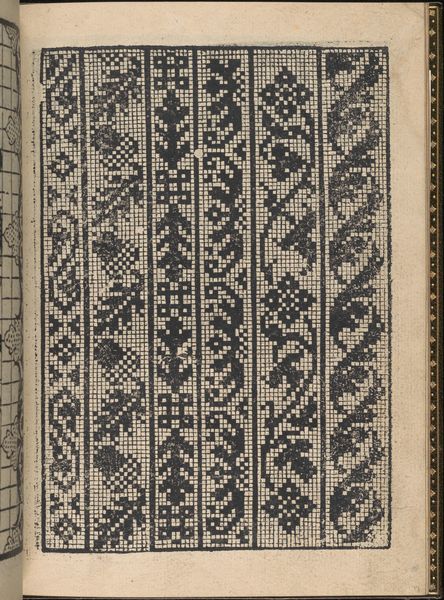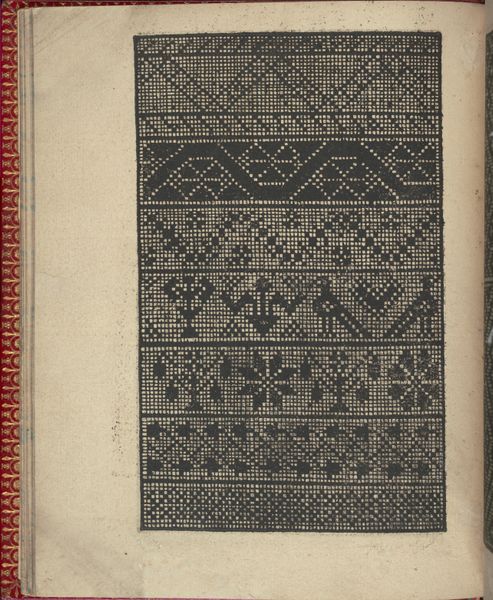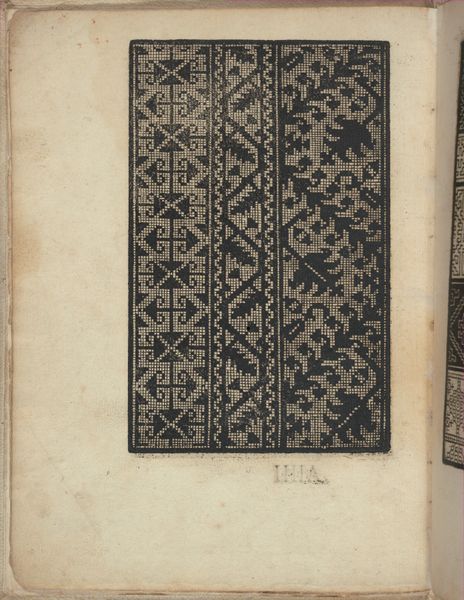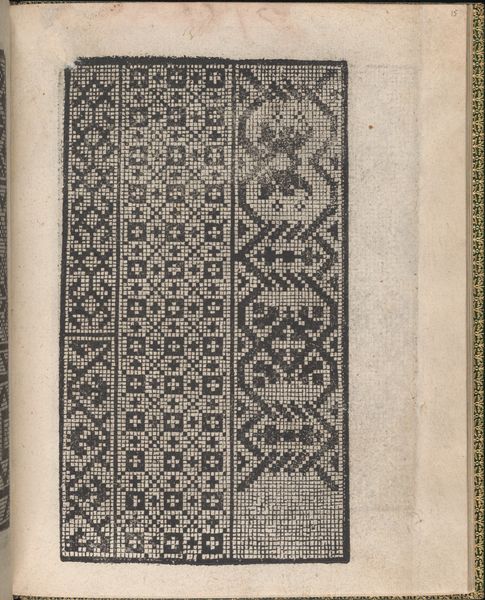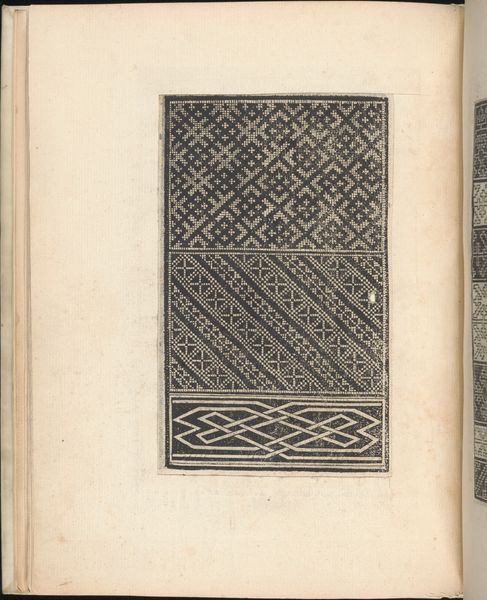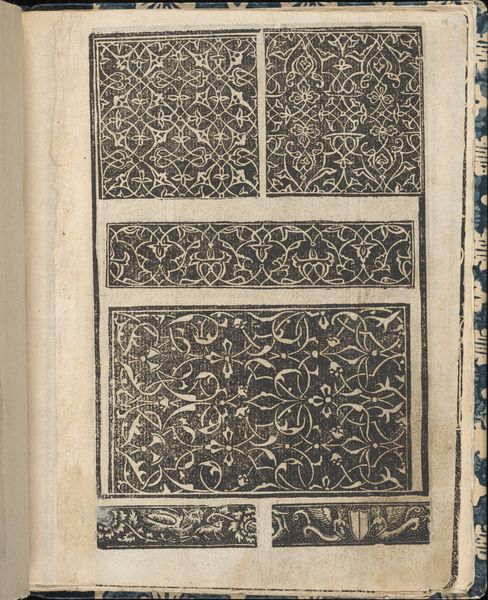
Ornamento delle belle & virtuose donne, page 7 (verso) 1554
0:00
0:00
drawing, graphic-art, ornament, print, engraving
#
drawing
#
graphic-art
#
ornament
#
medieval
# print
#
book
#
pen-ink sketch
#
engraving
Dimensions: Overall: 7 1/2 x 5 7/8 in. (19 x 15 cm)
Copyright: Public Domain
Curator: Immediately, I am struck by the precision of the lines and patterns. The work feels intensely detailed and almost meditative in its execution. Editor: We’re looking at a page titled "Ornamento delle belle & virtuose donne, page 7 (verso)," from a book by Matteo Pagano, created in 1554. It’s currently housed at the Metropolitan Museum of Art. The artwork employs engraving techniques in graphic art, acting as both a drawing and a print example used as pattern for needlework and lace. Curator: Engraving lends itself so well to this kind of minute, repetitive work. It is all lines and shapes but its also utilitarian at the same time. We see its influence on other artisanal forms like textiles and embroidery. You can imagine women of the era utilizing this almost as an instructional manual. Editor: Absolutely. Manuals like this played a key role in the spread of design ideas and tastes among a growing literate female population. The printing press made such designs accessible across social lines. Ornament books became highly valued tools, effectively democratizing aesthetic education and impacting fashion. Curator: These designs are all built from individual square motifs carefully composed. Notice the intricate details and geometric foundation. You start to wonder about the physical demands placed on those making this. Editor: Right. Understanding who had access to the knowledge contained in pattern books like this tells us a lot about social and gender history of the period. It's a physical trace of a visual and practical language. Consider how the church or political system also adopted ornamental language for themselves. Curator: The small format emphasizes the delicacy. It is both visually rich and utilitarian in its production for design work that emphasizes this. These weren't made for just walls. Editor: That is the exciting and most powerful dimension of works such as these - its influence trickles everywhere, decorating and influencing countless objects around us and forming everyday habits, which impact society at large. The level of dissemination and adaptation speaks volumes about the social aspirations of the rising middle class in society at this time. Curator: A truly remarkable item from the Met's collection, opening an important dialogue between design, use and labor from the past. Editor: Absolutely! A piece like this illustrates so powerfully how cultural and class dynamics were evolving because of mass media production.
Comments
No comments
Be the first to comment and join the conversation on the ultimate creative platform.
